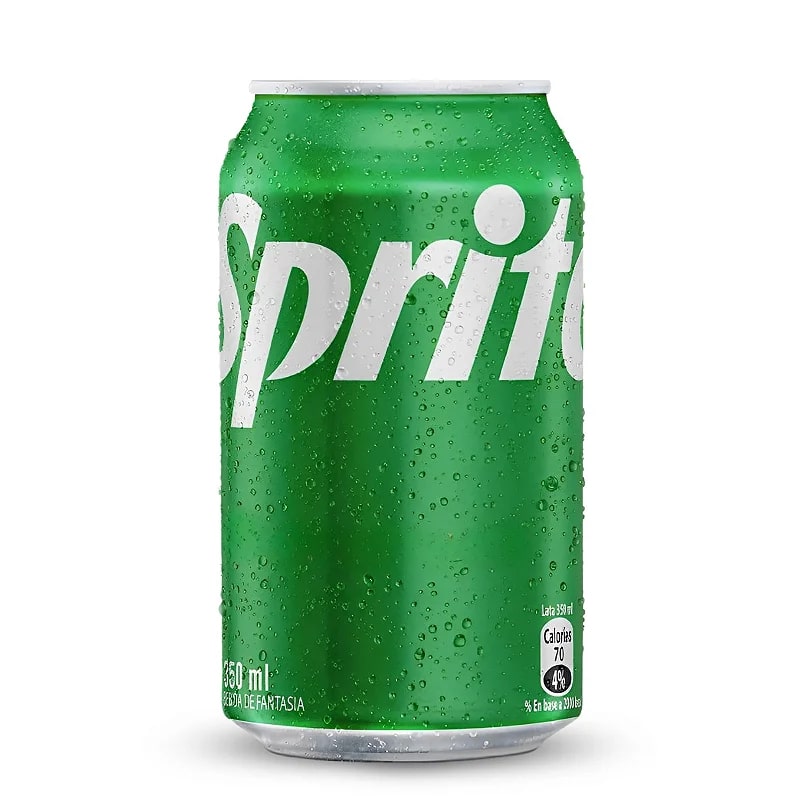Sprite is a popular lemon-lime-flavored soda that has been around since the 1960s. While many people enjoy its refreshing taste, there has been some concern about the health effects of drinking Sprite.
In this article, we will take a closer look at Sprite’s ingredients, nutritional facts, potential health benefits, what medical and health experts have to say, and ultimately determine whether Sprite is bad for you or not.
What is Sprite?

Sprite is a lemon-lime-flavored soft drink that is produced and owned by The Coca-Cola Company. It was first introduced in 1961 and has since become one of the most popular sodas in the world.
Sprite is known for its crisp and refreshing taste, and it is often marketed as a healthier alternative to other carbonated beverages.
Nutrition Facts of Sprite
A 12 oz (355 ml) serving of Sprite contains the following nutritional information:
- Calories: 140
- Total Fat: 0g
- Sodium: 65mg
- Total Carbohydrates: 38g
- Sugars: 38g
- Protein: 0g
The main ingredients in Sprite are carbonated water, high fructose corn syrup, citric acid, natural flavors, sodium benzoate, and caffeine (in some versions).
- Carbonated water: This is the primary ingredient in Sprite, which gives it its fizziness.
- High fructose corn syrup (HFCS): This is a sweetener derived from corn that is commonly used in soft drinks. It is a source of empty calories and has been linked to obesity, diabetes, and other health problems when consumed in excess.
- Citric acid: This is a natural preservative and flavor enhancer commonly found in citrus fruits. In Sprite, it is added to give a tart, citrusy taste.
- Natural flavors: These are flavorings derived from natural sources that are added to give Sprite its distinct taste.
- Sodium benzoate: This is a preservative used to prevent the growth of harmful bacteria and fungus in soft drinks.
- Caffeine (in some versions): Some varieties of Sprite contain added caffeine, which is a stimulant that can cause increased heart rate, jitteriness, and other side effects in sensitive individuals.
It’s worth noting that Sprite also contains a significant amount of added sugars, with 38 grams per 12 oz serving. Consuming too much-added sugar has been linked to a range of health issues, including obesity, type 2 diabetes, and heart disease.
Pros and Cons
Here are some potential pros and cons of consuming Sprite:
Pros:
- Refreshing taste
- Contains some vitamin C (depending on serving size)
- No caffeine or fat
Cons:
- High in added sugars (39 grams per 12 oz can)
- Contains no other significant vitamins or minerals
- Acidic nature can erode tooth enamel over time
- Can contribute to weight gain and other health issues when consumed in excess
It’s important to note that the cons of Sprite largely stem from its high sugar content. Excess sugar consumption has been linked to a range of health issues, including obesity, type 2 diabetes, and cardiovascular disease.
While the occasional Sprite is unlikely to cause significant harm, regular consumption of sugary drinks like Sprite is generally not recommended.
Health Benefits of Sprite
Sprite is a carbonated soft drink that contains various ingredients such as high fructose corn syrup, citric acid, natural flavors, and caffeine-free artificial flavors. However, it does not have any significant health benefits, and excessive consumption of sugary drinks like Sprite can lead to various health problems.
According to a study published in The American Journal of Clinical Nutrition, consuming sugar-sweetened beverages like Sprite is associated with an increased risk of obesity, type 2 diabetes, and cardiovascular disease.
In contrast, water and other unsweetened beverages are considered the healthiest choices for hydration and overall health. They do not contain added sugars or artificial sweeteners and can help maintain a healthy weight and reduce the risk of chronic diseases.
Overall, while Sprite may be a refreshing and enjoyable beverage, it is not a healthful choice due to its high sugar content and lack of nutritional benefits.
What Do Medical Experts Say About Sprite?
Sprite is a sugary carbonated beverage that contains a high amount of added sugar. According to a study published in Circulation, consuming sugary beverages, including Sprite, is associated with an increased risk of developing type 2 diabetes, obesity, and cardiovascular disease.
Medical experts also recommend avoiding or limiting the consumption of sugary drinks like Sprite, as they can contribute to tooth decay, weight gain, and other health problems.
It is important to note that Sprite Zero, which is a sugar-free version of Sprite, does not contain added sugar and maybe a better option for those looking to reduce their sugar intake. However, it is still a highly processed beverage and should be consumed in moderation.
Scientific Studies on Sprite
There are several studies conducted on the effects of consuming Sprite and other sugary beverages. Here are five studies that provide insights on the topic:
- A study found that regular consumption of sugar-sweetened beverages like Sprite is associated with weight gain and an increased risk of type 2 diabetes.
- Another study found that consumption of sugary drinks like Sprite is linked to an increased risk of heart disease.
- A study found that high levels of sugar consumption can alter the brain’s reward system and lead to addiction-like behavior.
What do Health experts say about Sprite?
There is limited information from health experts specifically about Sprite, but there is general consensus among experts about the potential negative health effects of consuming sugary drinks on a regular basis.
The American Heart Association, for example, recommends limiting sugary drinks like soda to no more than 36 ounces per week for men and no more than 24 ounces per week for women.
One health expert, Dr. David Ludwig, a pediatric obesity specialist at Harvard Medical School, explains, “When you consume liquid sugar, the body doesn’t register the calories in the same way as with solid food…So you end up consuming more calories overall, and that’s what leads to weight gain over time.”
Who Should Avoid Sprite?
While Sprite is generally considered safe for consumption in moderation, certain individuals should avoid or limit their intake. Those who have diabetes or are at risk of developing diabetes should limit their consumption of sugary beverages like Sprite due to their high sugar content.
Additionally, those who are trying to maintain a healthy weight or lose weight may want to avoid or limit their intake of Sprite and other sugary drinks, as they can contribute to weight gain and obesity.
Studies have also linked the consumption of sugary beverages like Sprite to an increased risk of various health issues, including type 2 diabetes, heart disease, and certain types of cancer.
As such, health experts generally recommend limiting the consumption of sugary drinks and opting for healthier beverage choices, such as water, unsweetened tea, or sparkling water with a splash of fruit juice for flavor.
Alternatives to Sprite
- Sparkling water with a splash of fruit juice.
- Kombucha.
- Herbal tea with honey or fruit-infused ice cubes.
FAQ
Is Sprite better for you than other sodas?
Sprite may be considered “better” for you than other sodas due to its lower calorie and sugar content, but it still contains artificial ingredients and should be consumed in moderation.
Can Sprite help with stomach problems?
Some people believe that drinking Sprite can help with stomach problems such as nausea and vomiting, although there is limited scientific evidence to support this claim.
Is Sprite caffeine-free?
Yes, Sprite is caffeine-free.
How many calories does Sprite have?
A 12-ounce can of Sprite has 140 calories.
Is Sprite good for hydration?
Sprite can help with hydration since it is mostly water, but it is not a replacement for water and does contain added sugars.
Conclusion: Is Sprite bad for you?
Sprite is a carbonated beverage that has a sweet, refreshing taste that is enjoyed by many. While Sprite does contain added sugars and artificial flavors, it can be consumed in moderation as part of a balanced diet.
However, excessive consumption of Sprite and other sugary beverages can lead to negative health outcomes such as obesity and type 2 diabetes.
It is recommended to limit intake of sugary drinks and to prioritize water as the main source of hydration. Ultimately, the decision to consume Sprite or any other sugary drink should be made based on individual health goals and considerations.
References
1. Harris JL, Schwartz M, Brownell KD, Javadizadeh J, Weinberg M. Evaluating sugary drink nutrition and marketing to youth. Rudd Center for Food Policy and Obesity; 2011. https://www.sugarydrinkfacts.org/resources/SugaryDrinkFACTS_Report_2011.pdf
2. McCusker RR, Goldberger BA, Cone EJ. Caffeine content of energy drinks, carbonated sodas, and other beverages. Journal of Analytical Toxicology. 2006;30(2):112-114. https://academic.oup.com
3. Walker RW, Dumke KA, Goran MI. Fructose content in popular beverages made with and without high-fructose corn syrup. Nutrition. 2014;30(7-8):928-935. https://www.sciencedirect.com/science/article/pii/S0899900714001920
4. Wright HN. The comparative efficiency of the commonly used flavoring agents. Journal of the American Medical Association. 1937;108(12):959-961. https://jamanetwork.com/journals/jama/article-abstract/276200
5. Shukla R, Lalrengpuii J, Abhay W, Vignesh K, Prabakaran A. Natural flavors in functional food supplements. Flavor Development for Functional Foods and Nutraceuticals. CRC Press; 2019:117-139. https://www.taylorfrancis.com
6. Shahmohammadi M, Javadi M, Nassiri-Asl M. An overview on the effects of sodium benzoate as a preservative in food products. Biotechnology and Health Sciences. 2016;3(3):7-11. http://eprints.qums.ac.ir/5176/
7. Khan N. Caffeinated beverages and energy drink: Pattern, awareness and health side effects among Omani university students. Biomedical Research. 2019;30(1):113-121. https://www.researchgate.net
8. Ruanpeng D, Thongprayoon C, Cheungpasitporn W, Harindhanavudhi T. Sugar and artificially sweetened beverages linked to obesity: A systematic review and meta-analysis. QJM: An International Journal of Medicine. 2017;110(8):513-520. https://academic.oup.com/qjmed/article-abstract/110/8/513/3574201
9. Bhupathiraju SN, Pan A, Malik VS, et al. Caffeinated and caffeine-free beverages and risk of type 2 diabetes. The American Journal of Clinical Nutrition. 2013;97(1):155-166. https://academic.oup.com/ajcn/article-abstract/97/1/155/4577018
10. Bonfiglioli C, Hattersley L, King L. Australian print news media coverage of sweet, non‐alcoholic drinks sends mixed health messages. Australian and New Zealand Journal of Public Health. 2011;35(4):325-330. https://onlinelibrary.wiley.com/doi/abs/10.1111/j.1753-6405.2011.00726.x
11. Zupanič N, Mis NF, Pravst I. Chapter 11 – Soft drinks: Public health perspective. In: Galanakis CM, ed. Trends in Non-Alcoholic Beverages. Academic Press; 2020:325-369. https://www.sciencedirect.com/science/article/abs/pii/B9780128169384000112
12. Lien L, Lien N, Heyerdahl S, Thoresen M, Bjertness E. Consumption of soft drinks and hyperactivity, mental distress, and conduct problems among adolescents in Oslo, Norway. American Journal of Public Health. 2006;96(10):1815-1820. https://ajph.aphapublications.org/doi/abs/10.2105/AJPH.2004.059477
Next, check out some recent reviews you might find useful:

Leave a Reply